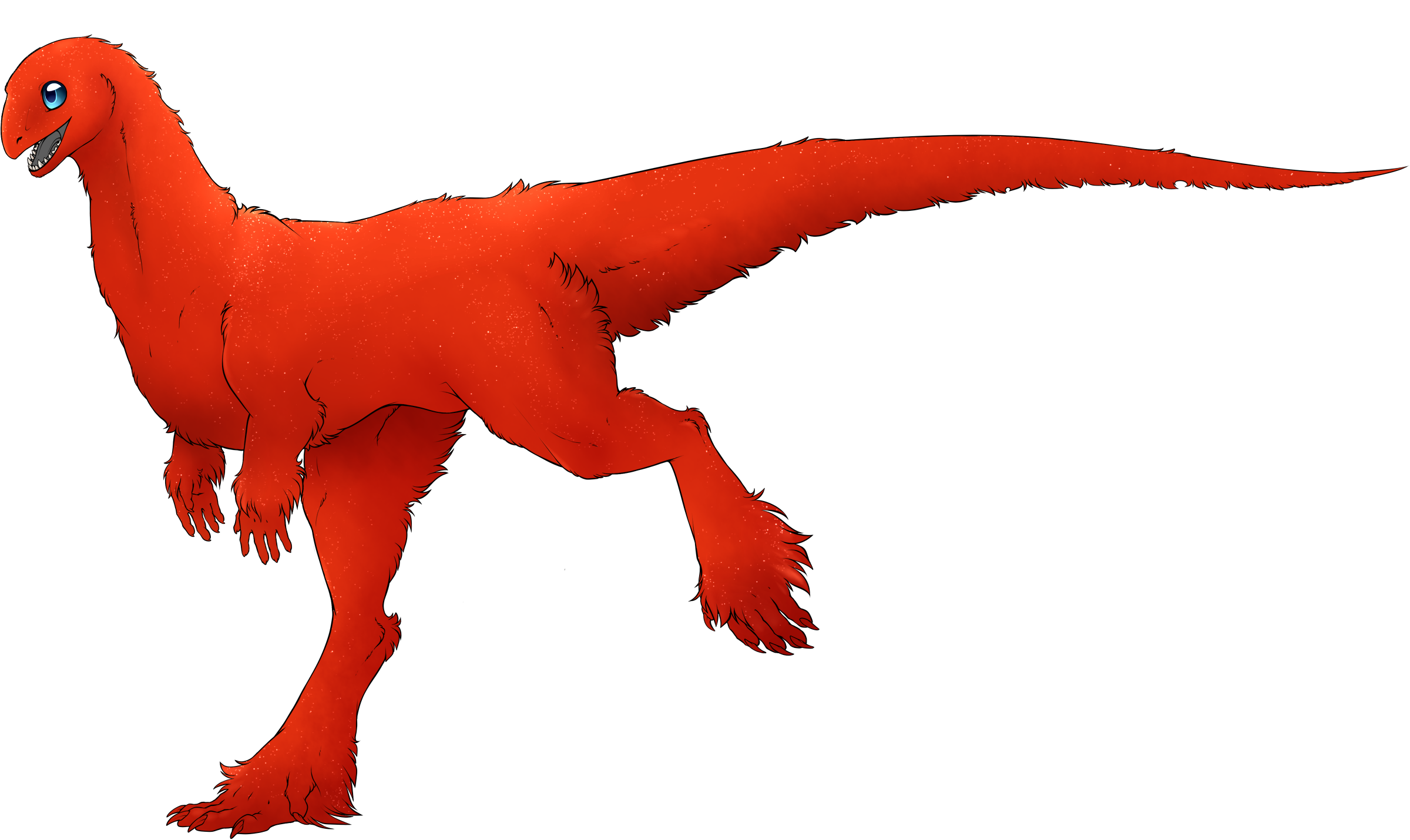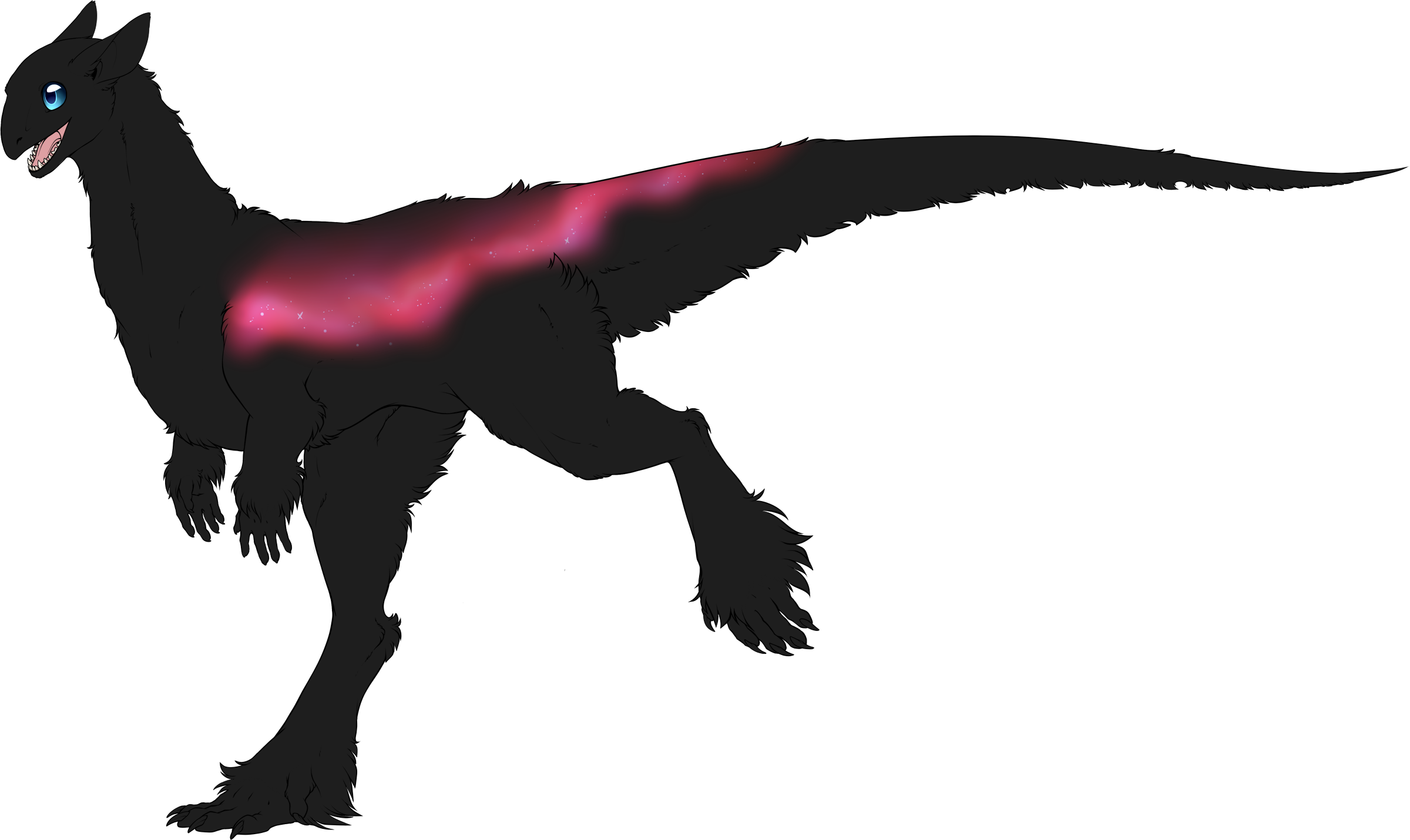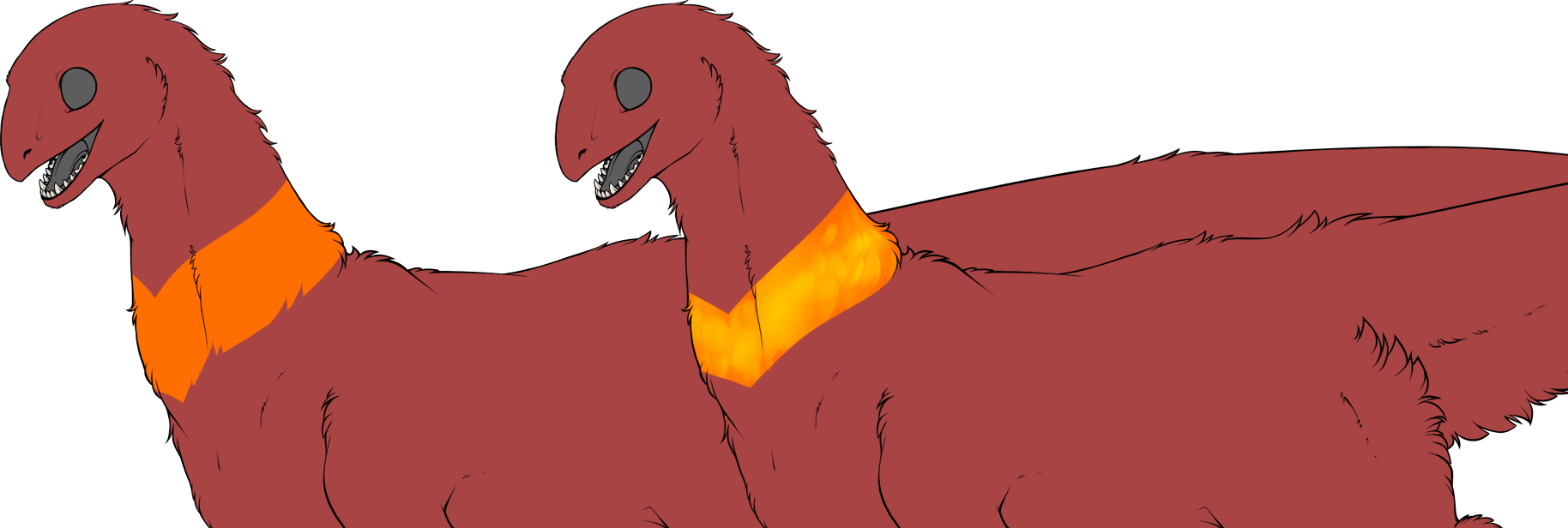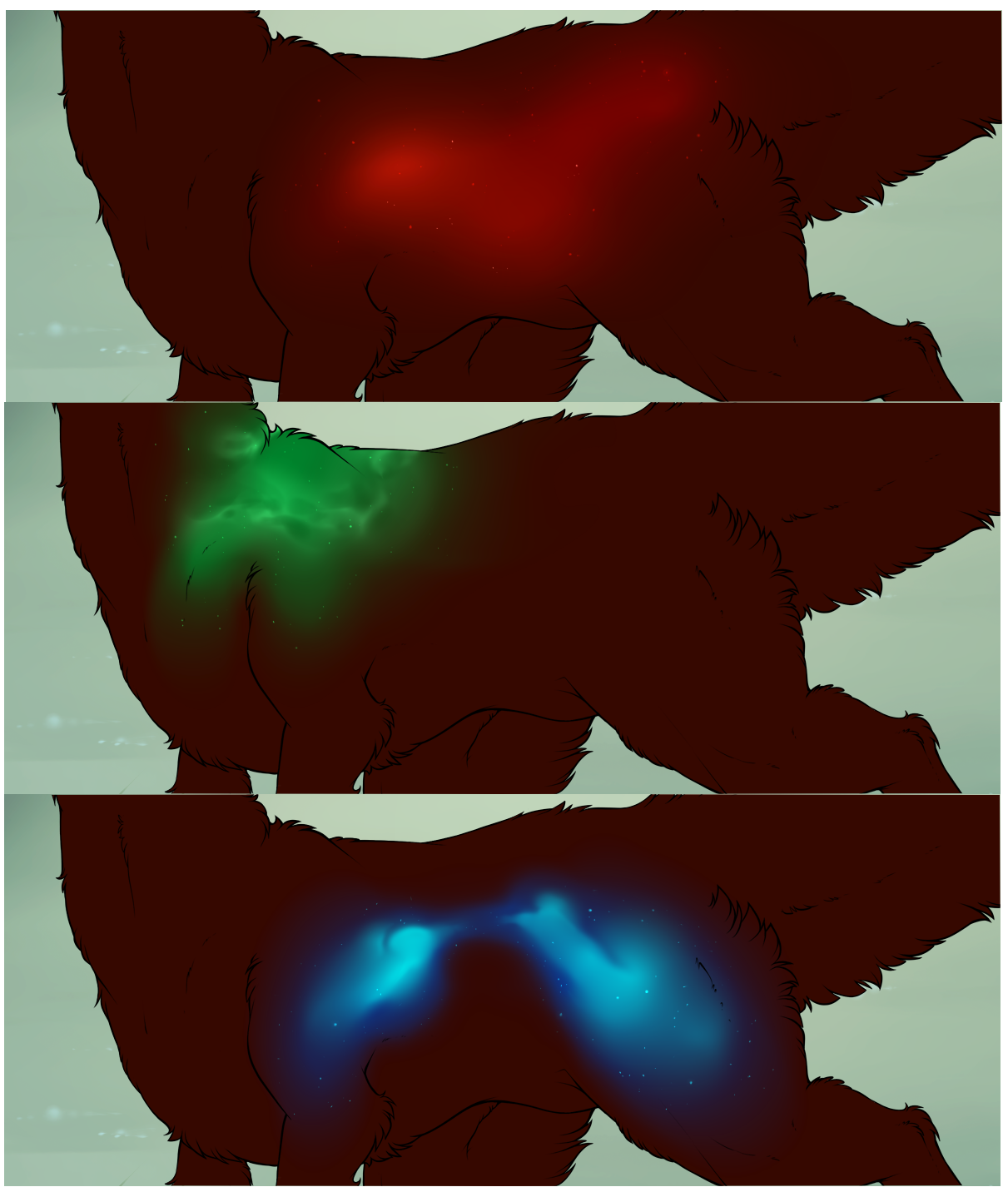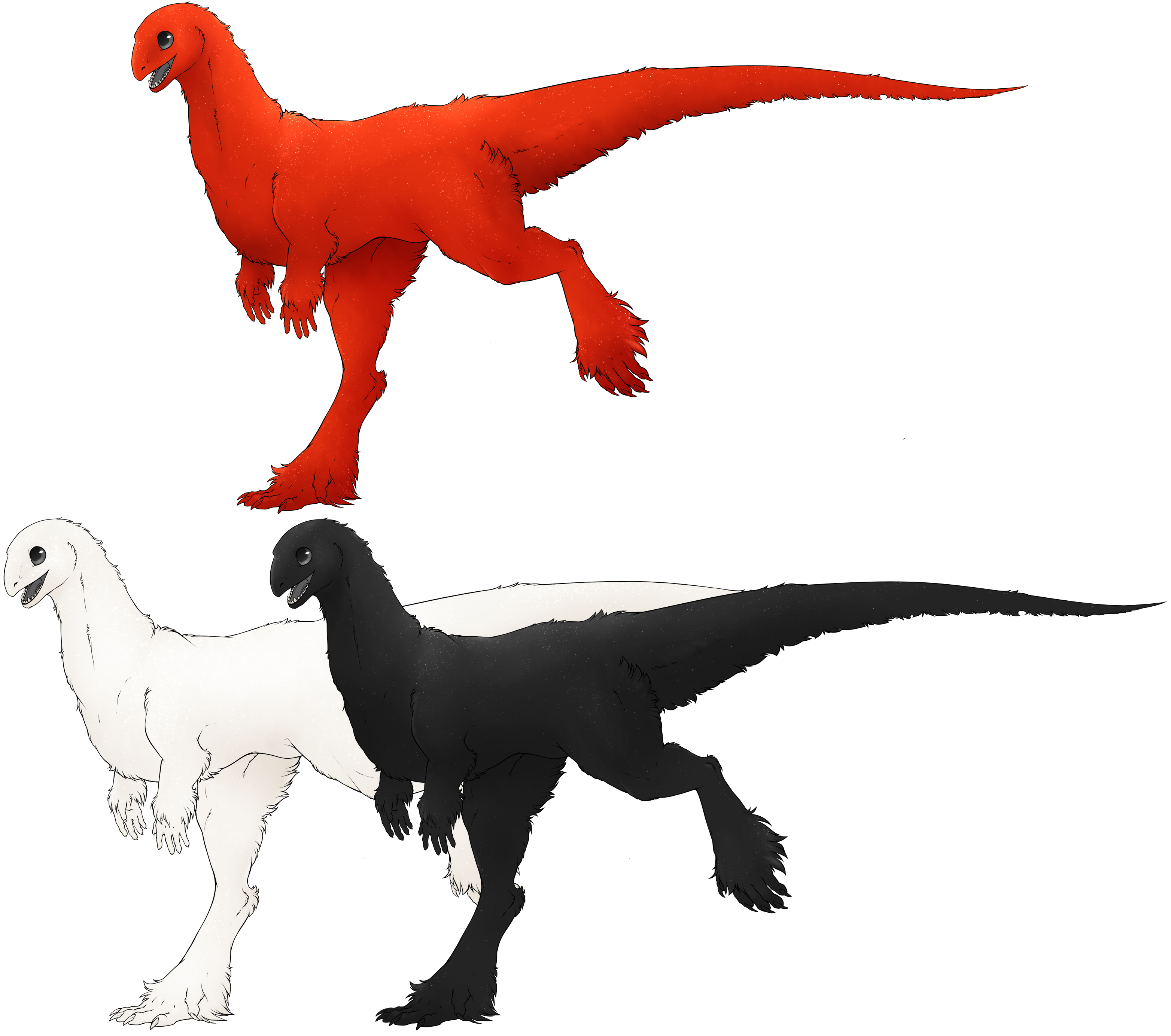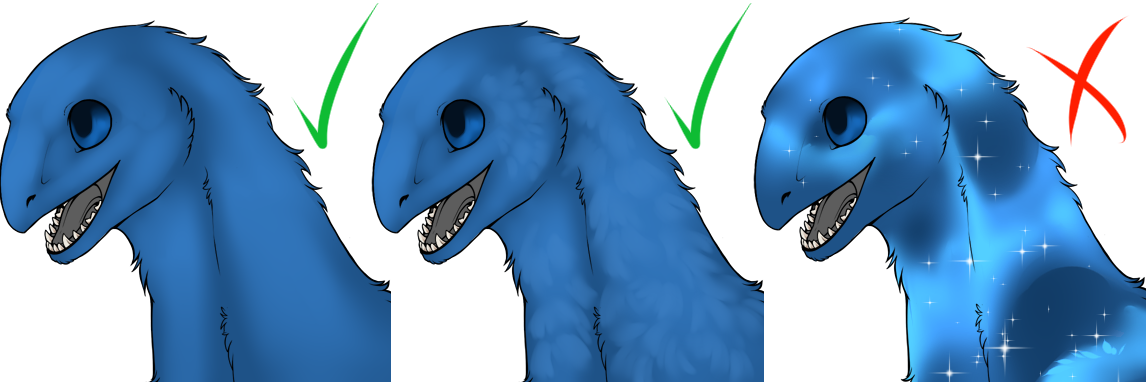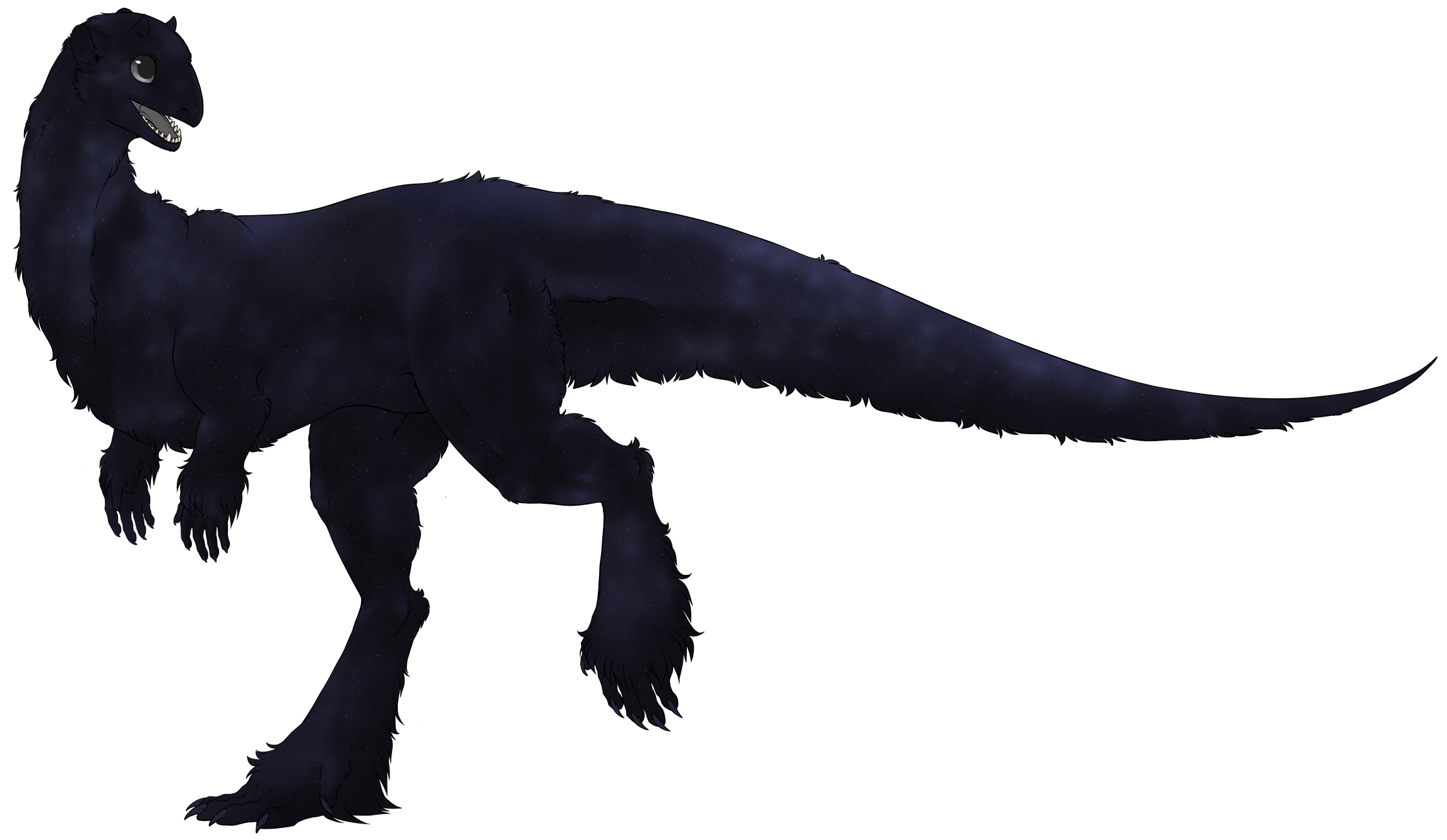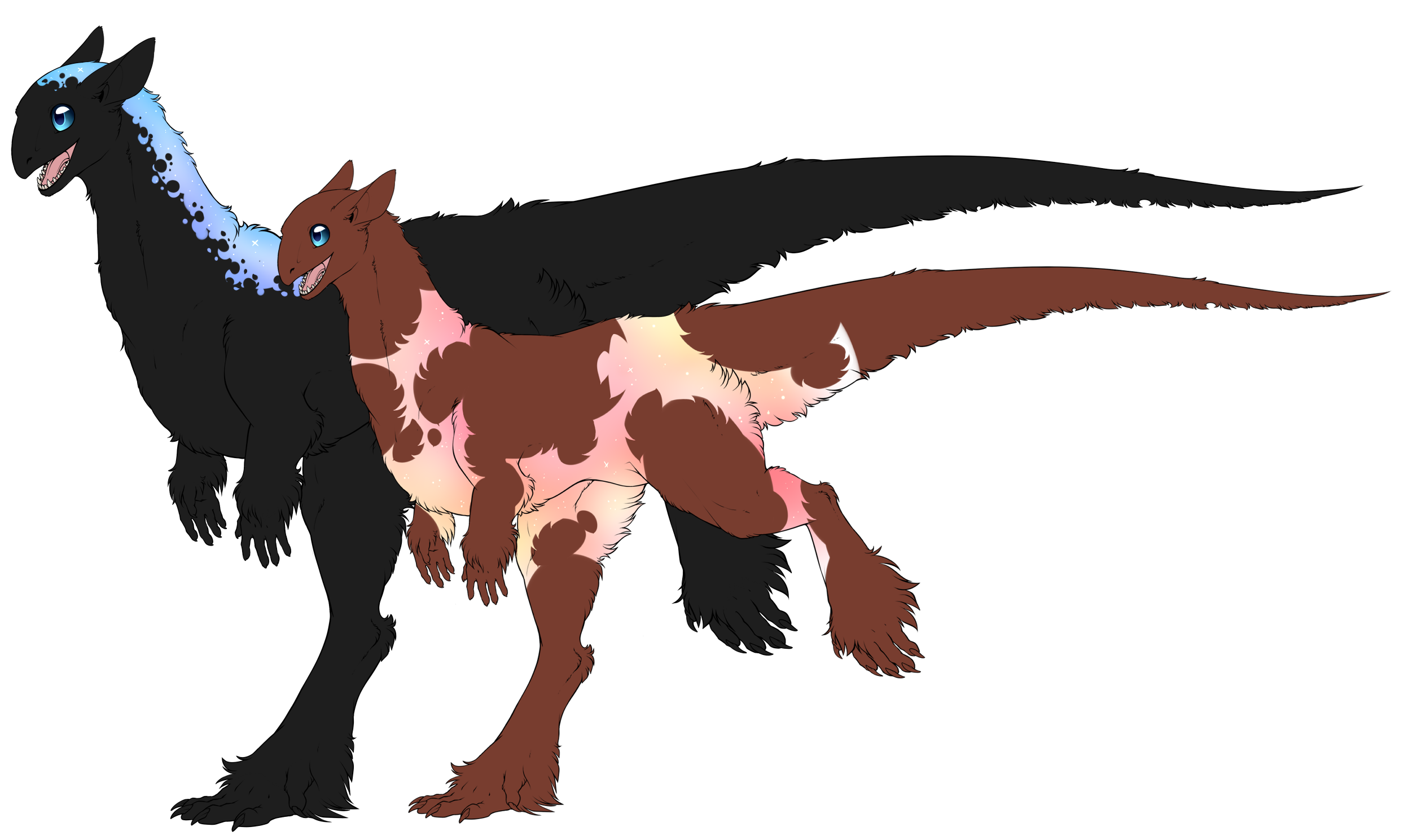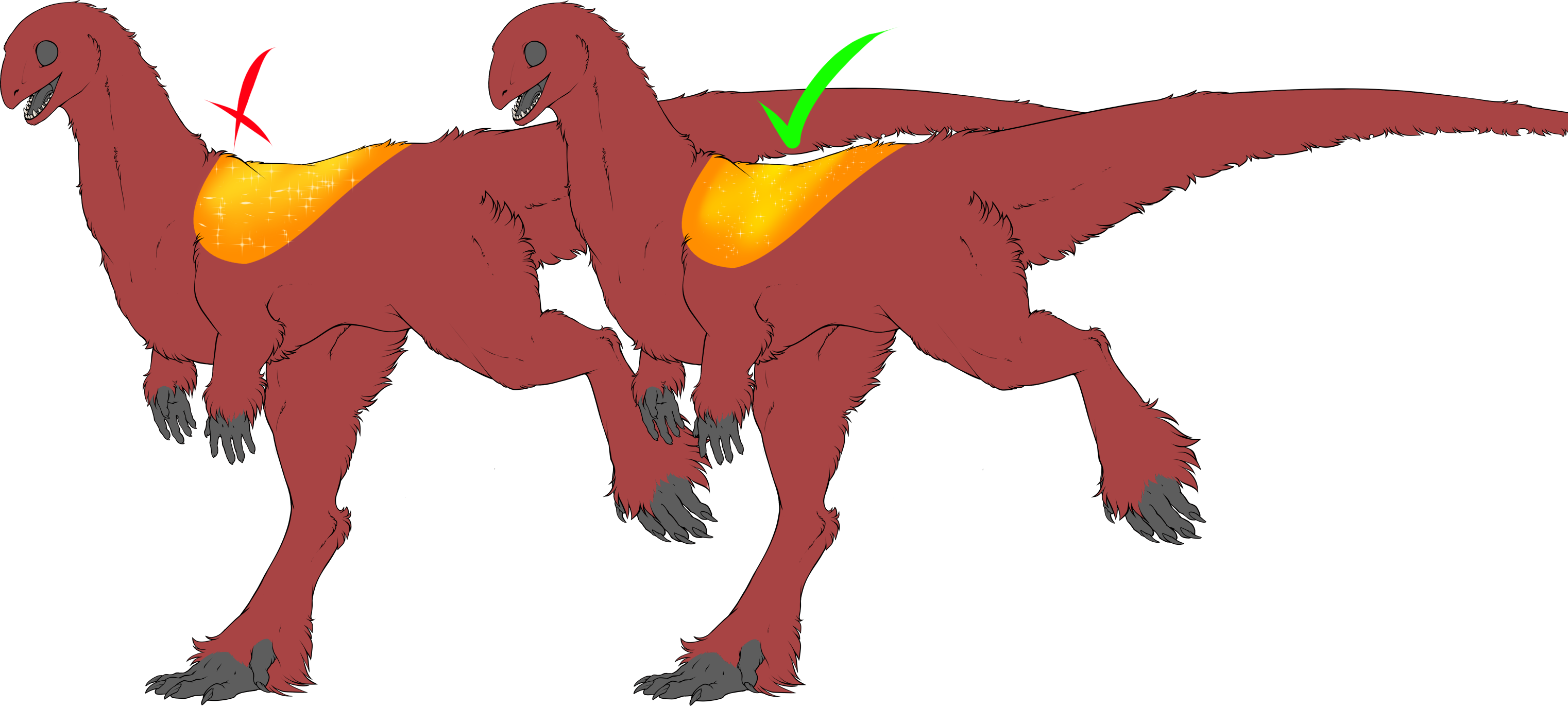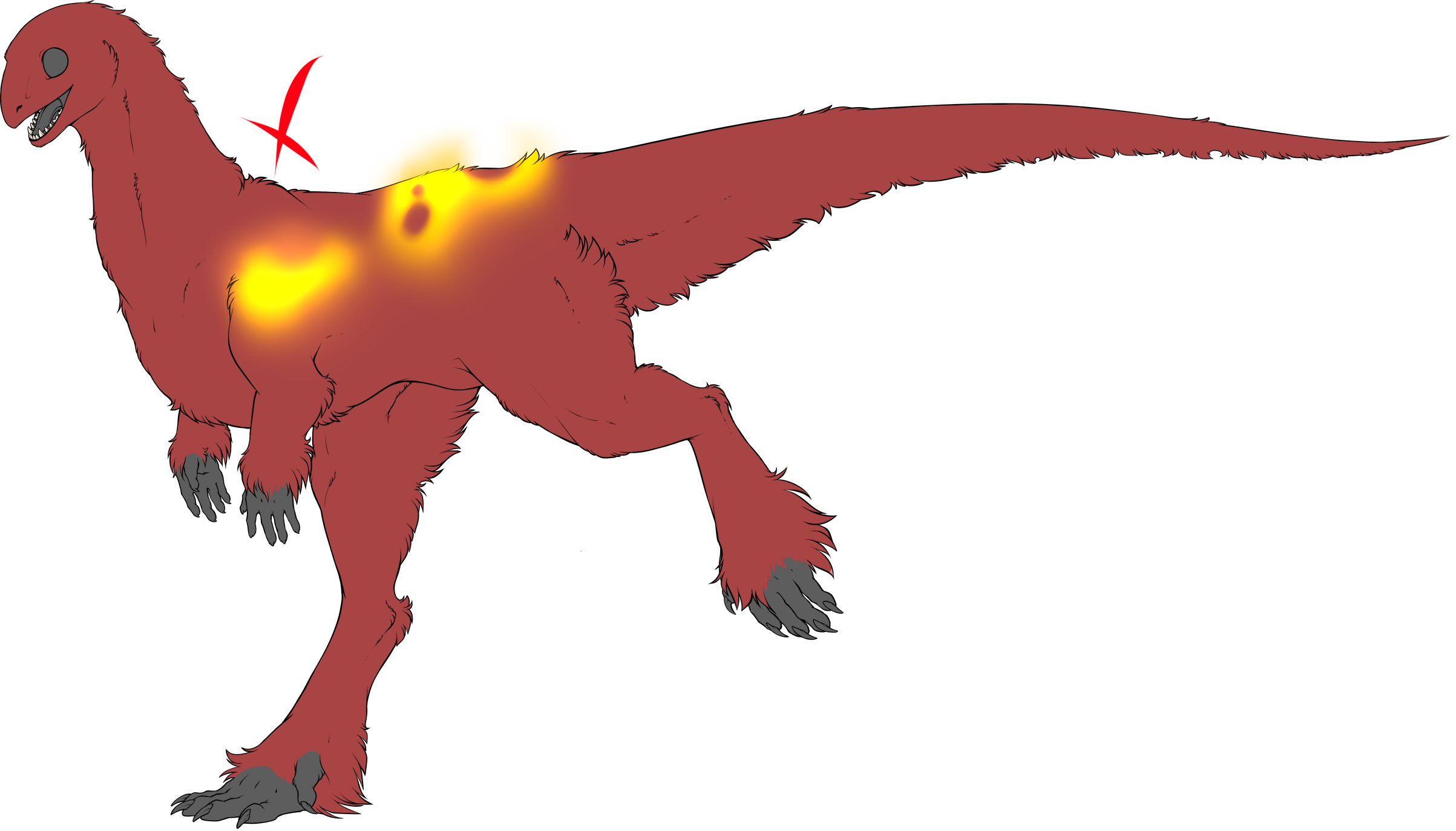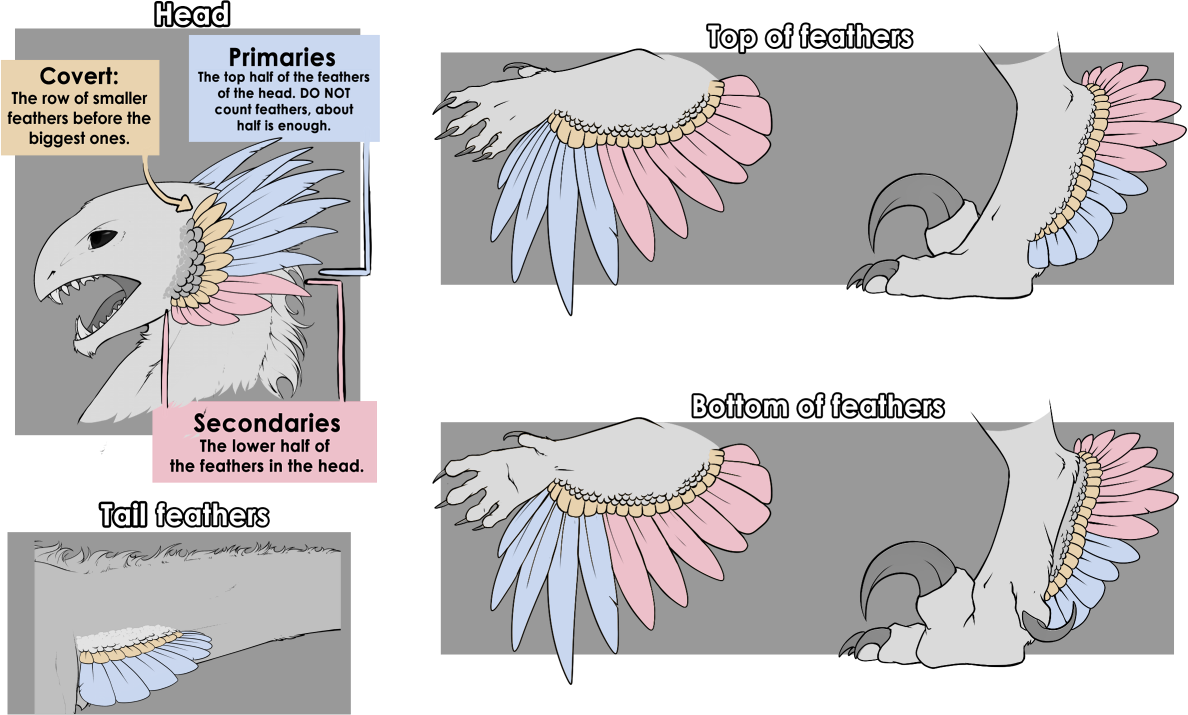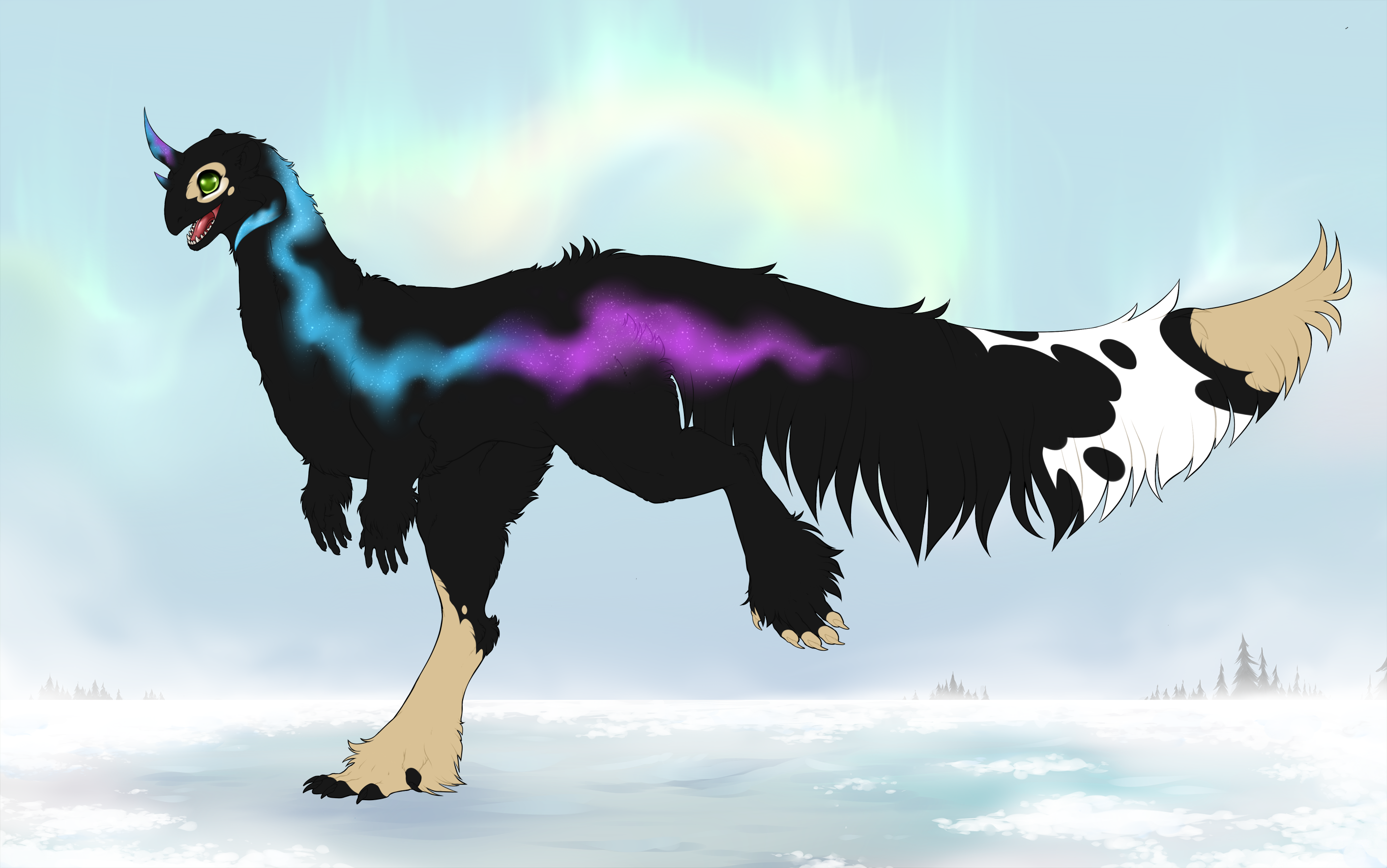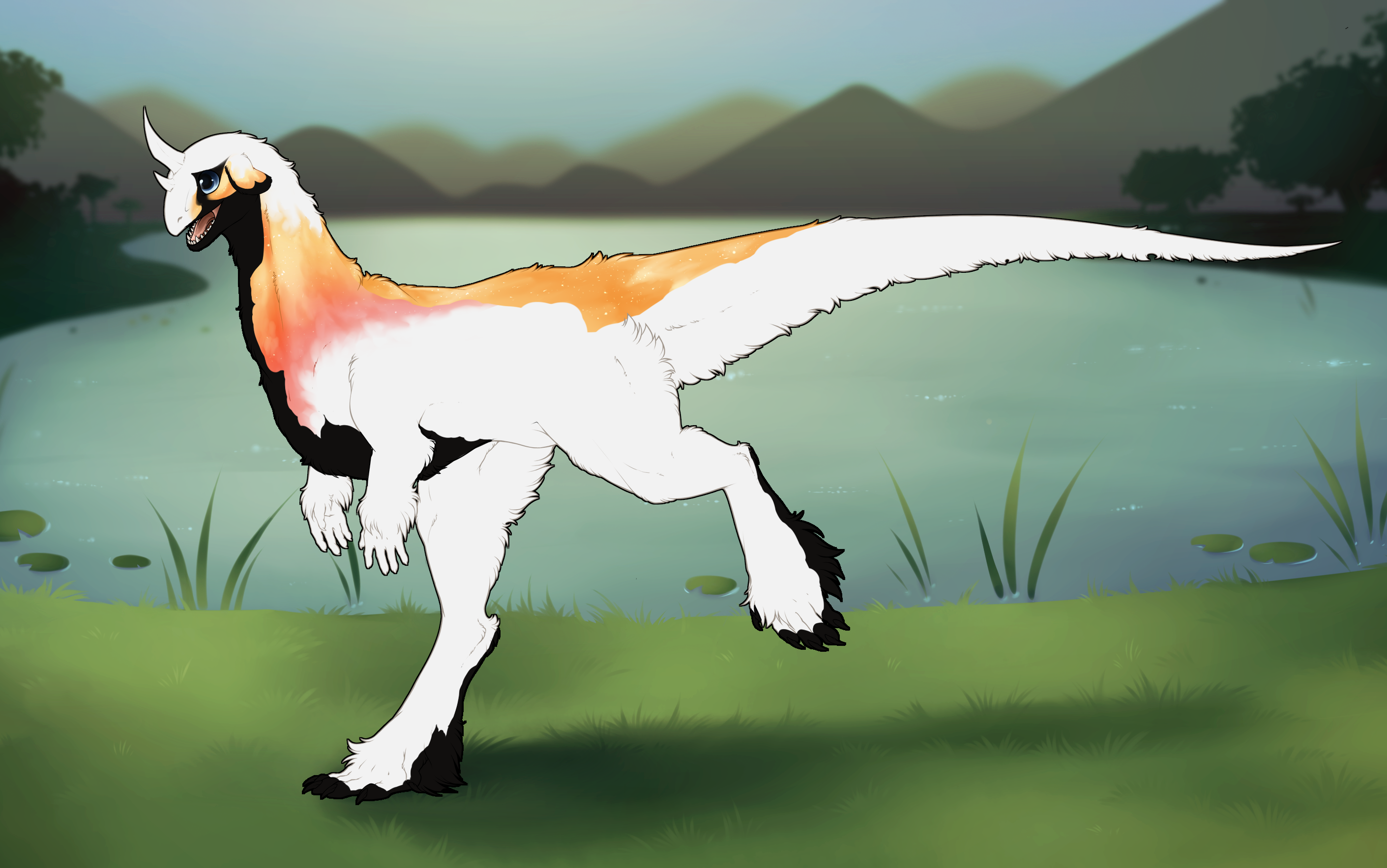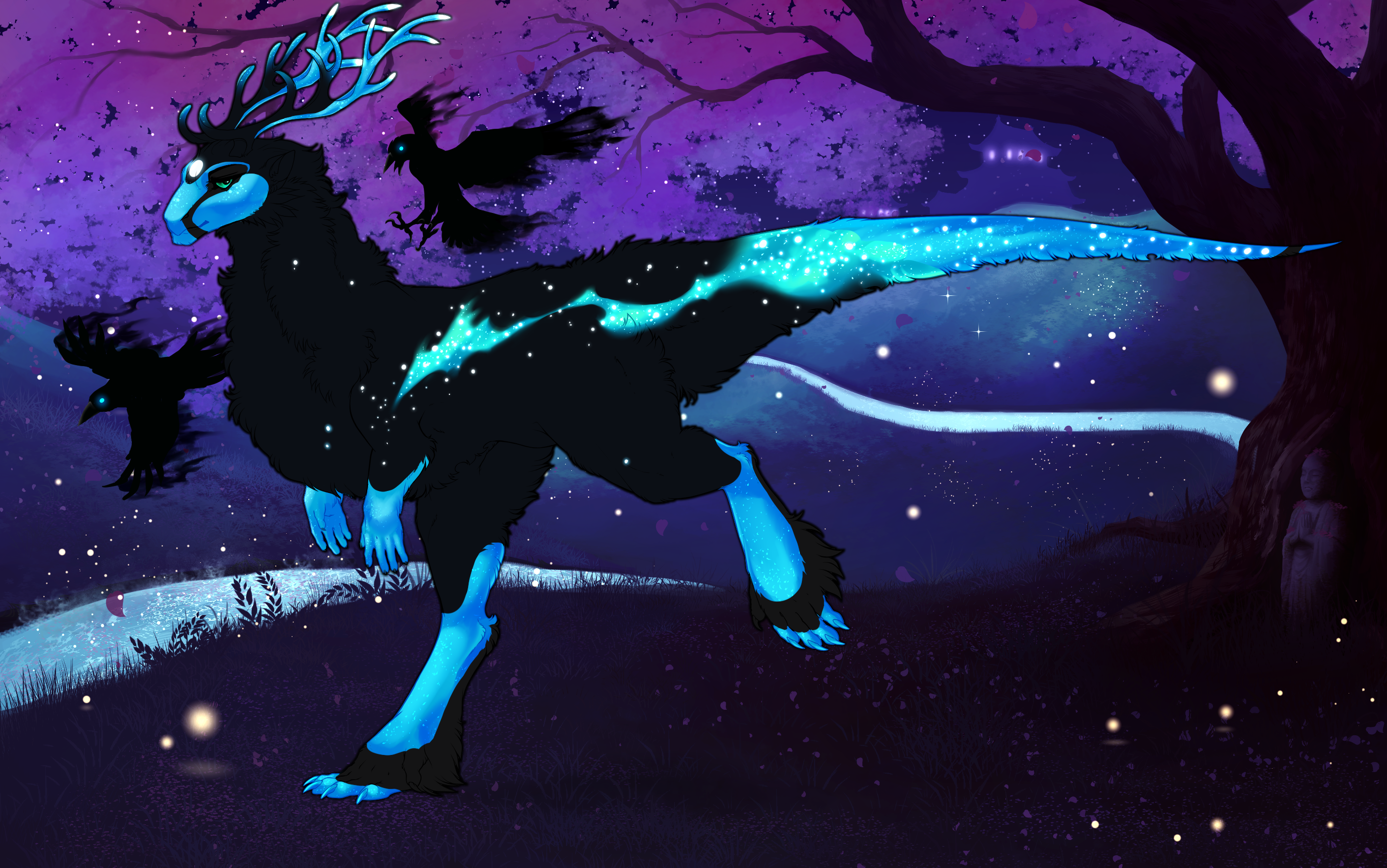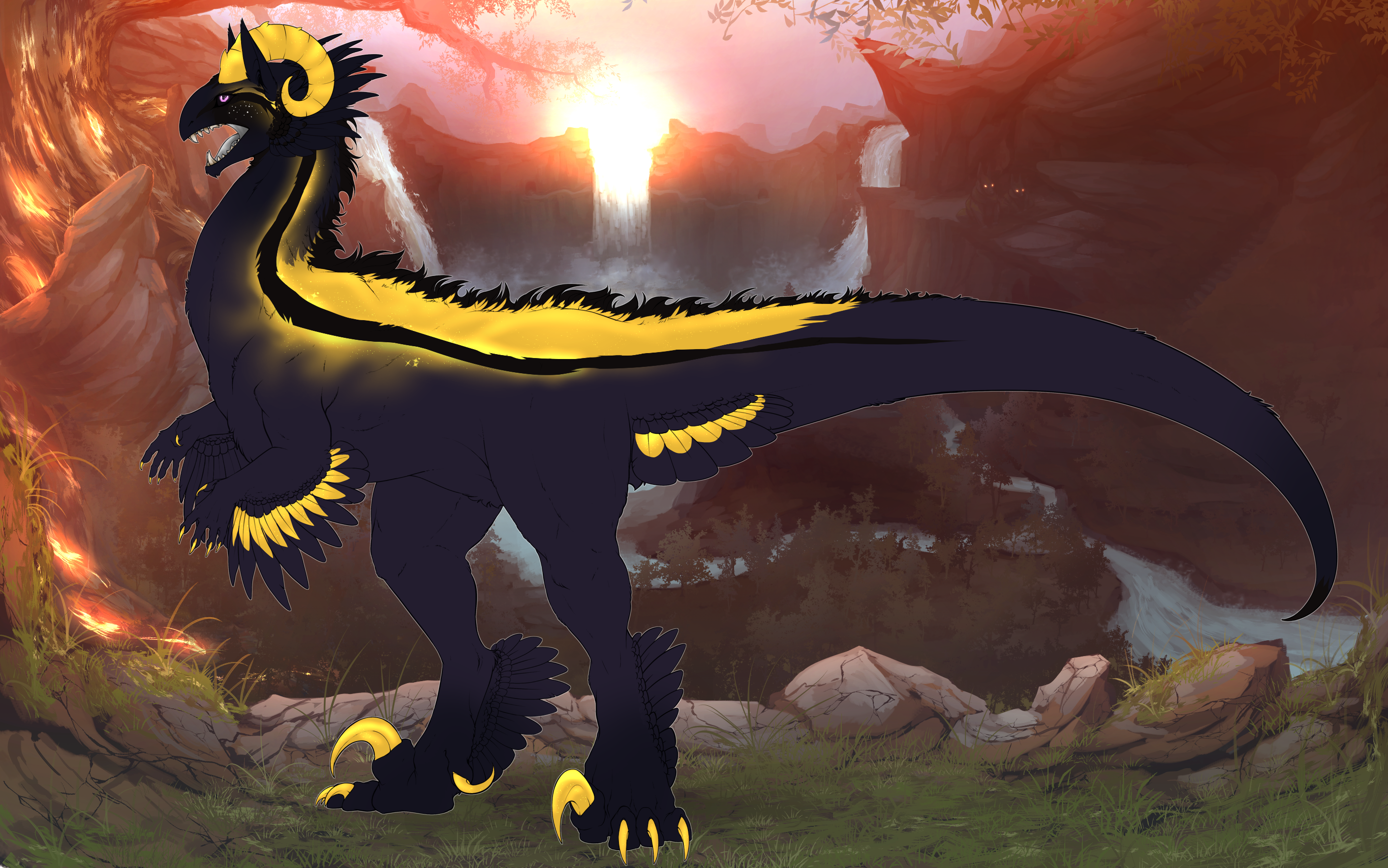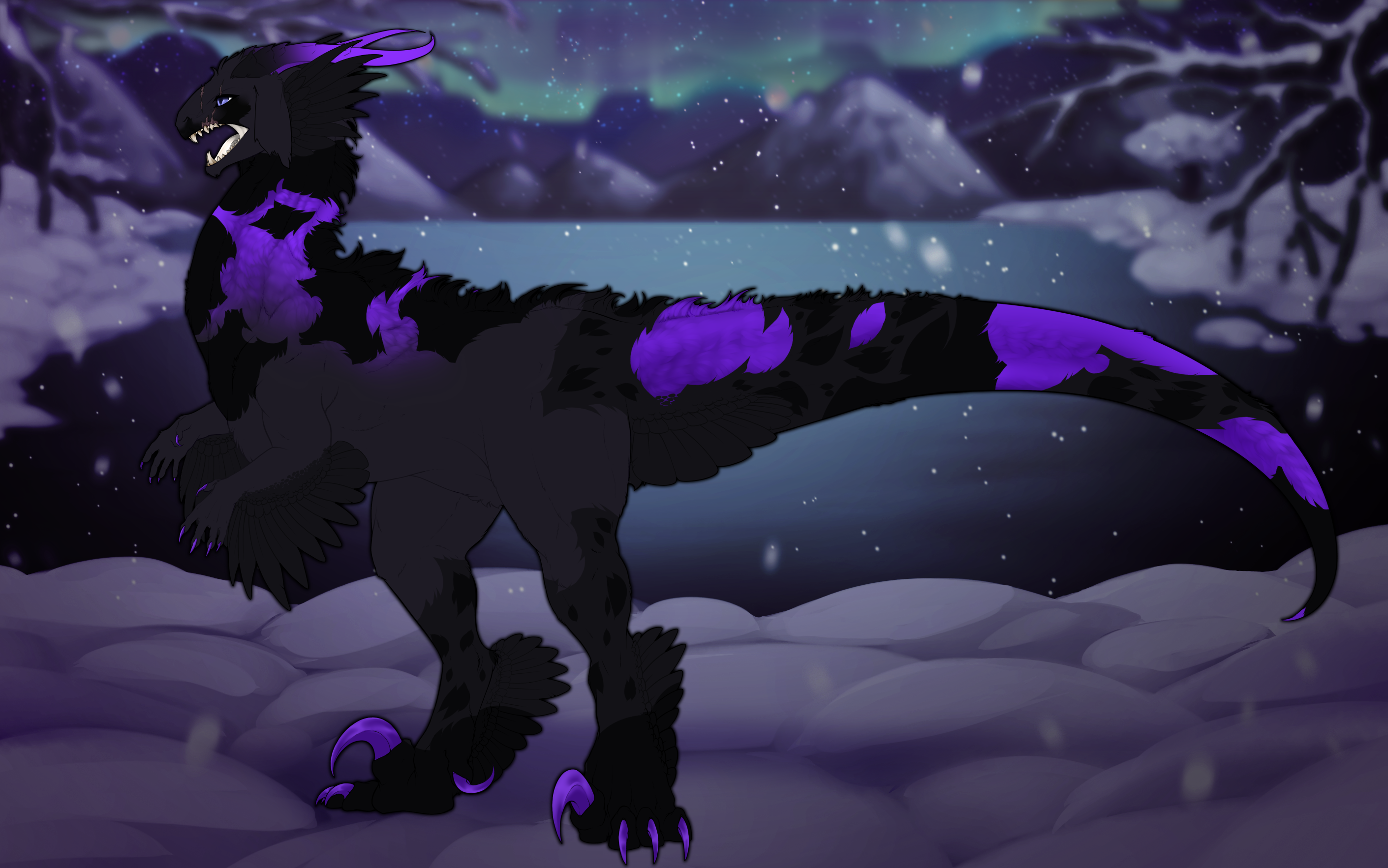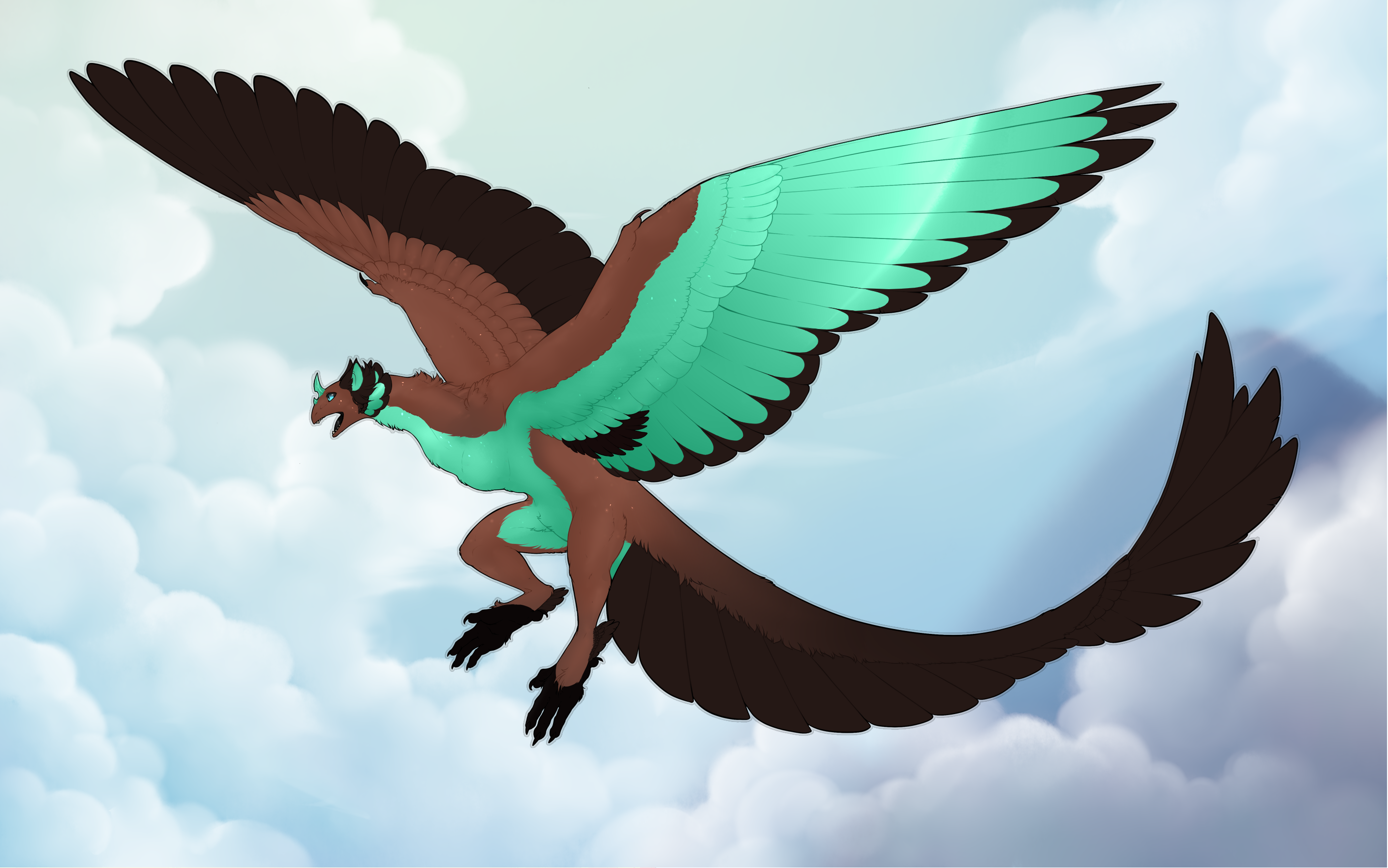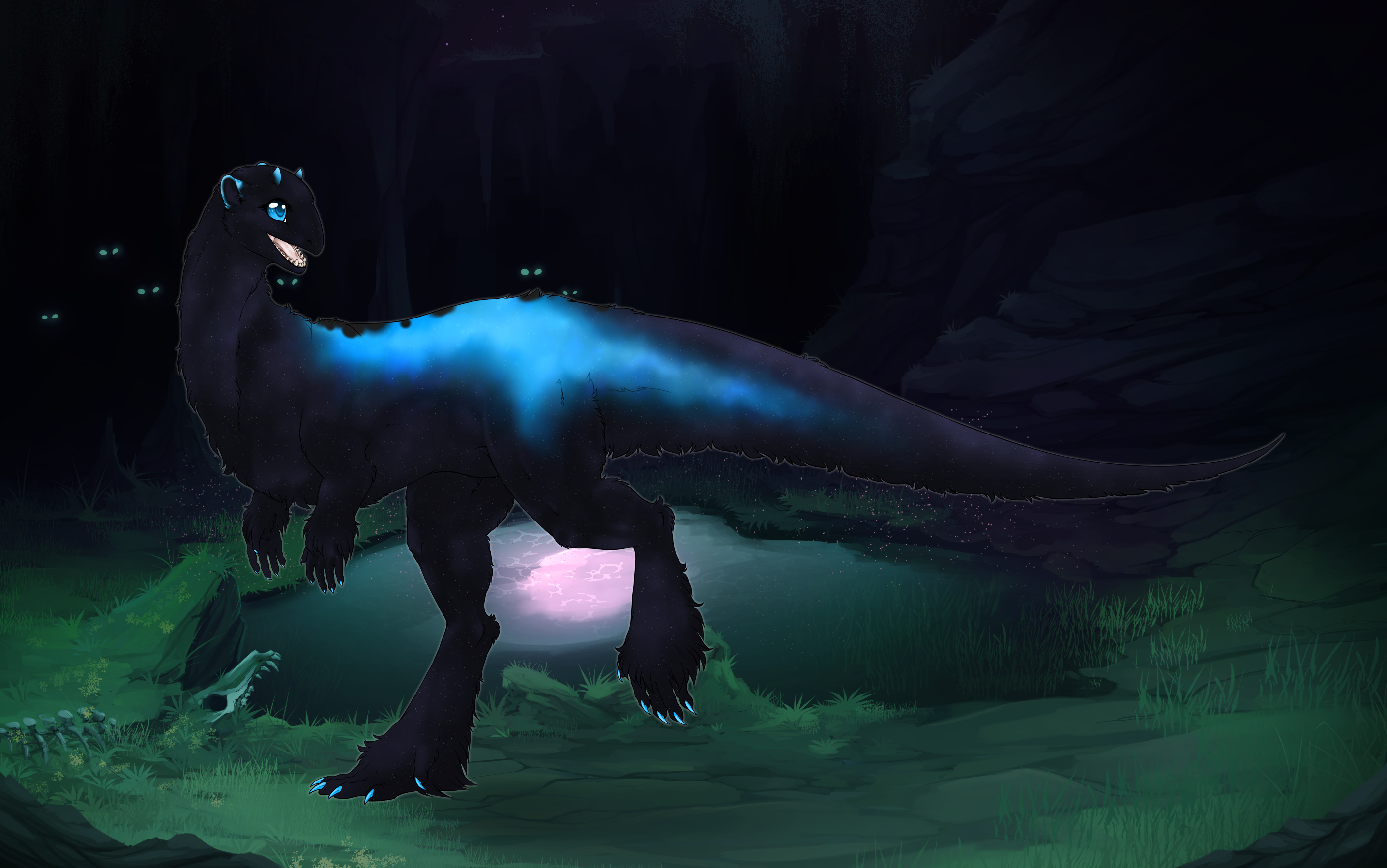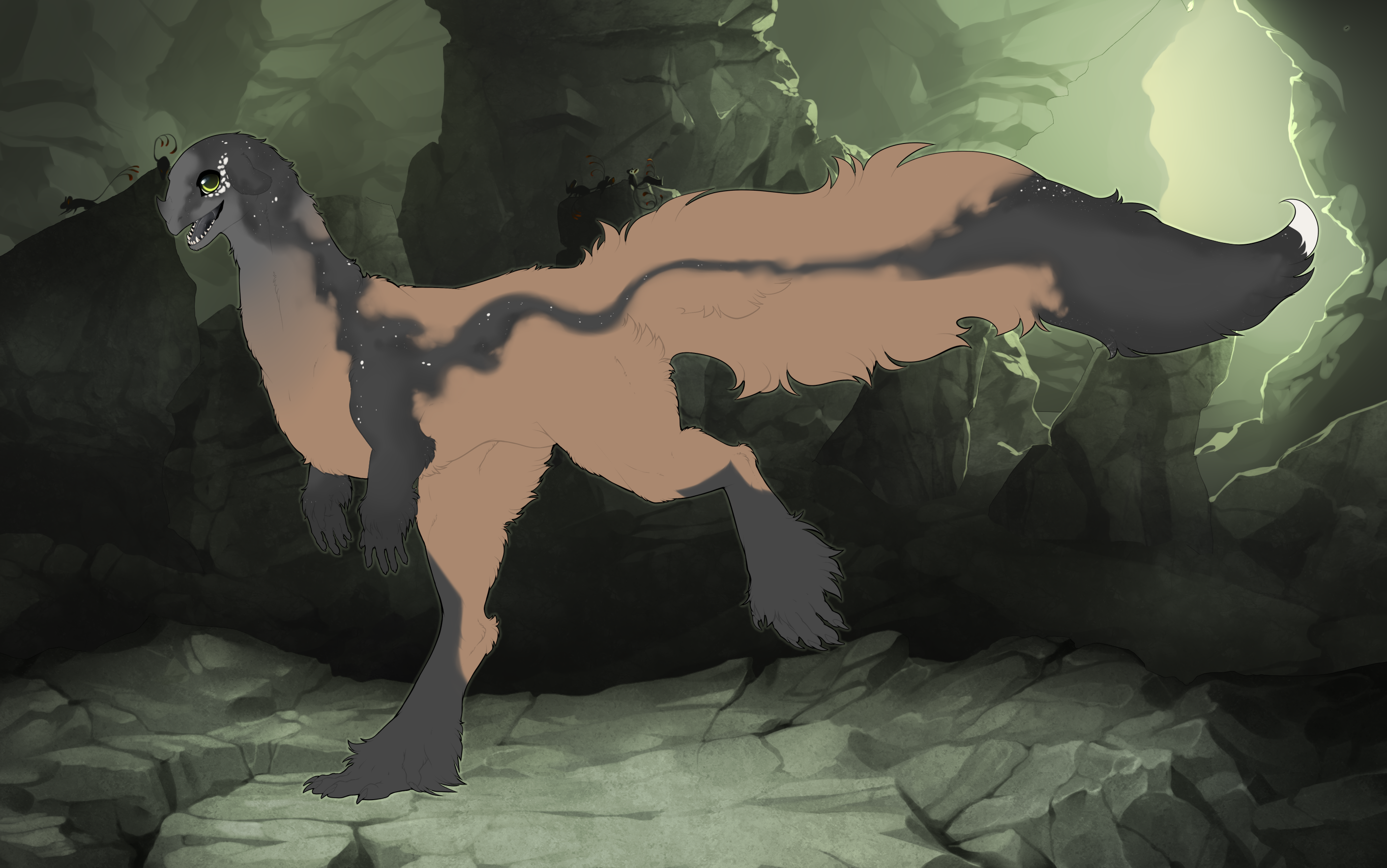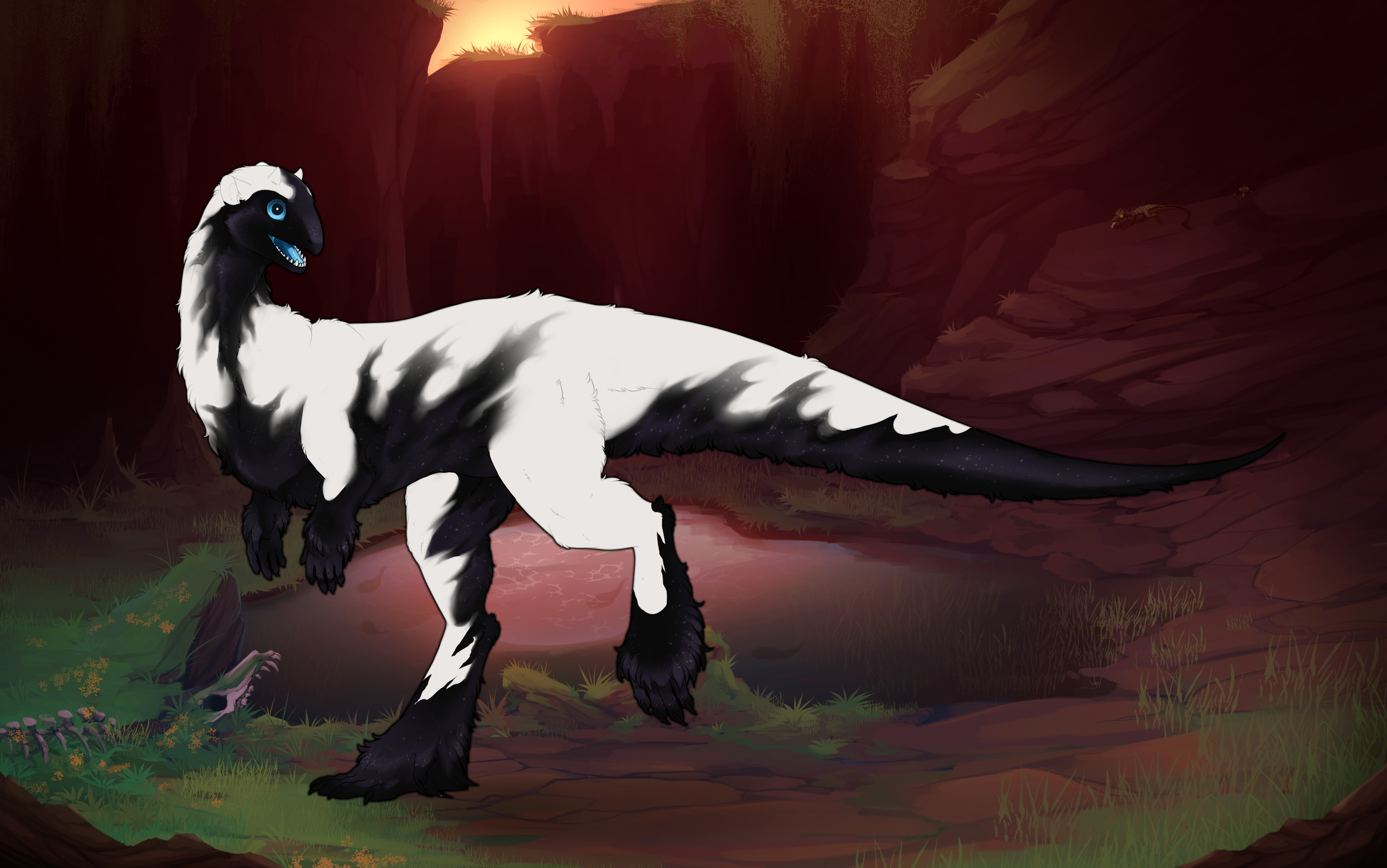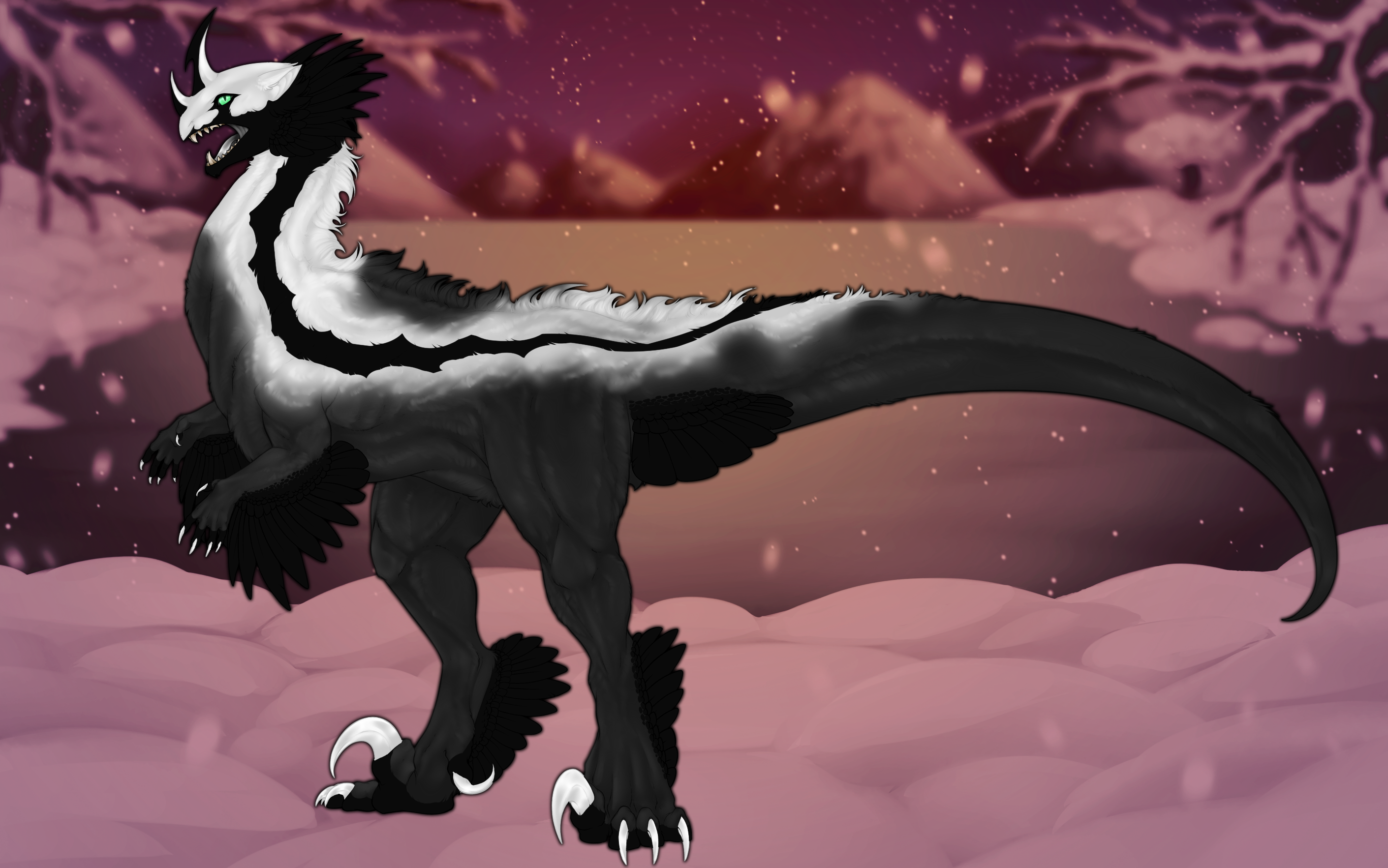Recessive Allowances
Recessive Iridescent can oversaturate the base coat color and/or makes it shine. Therefore, a crimson kukuri can become a rich red and allow for a sheen or glimmering effect across the coat, but it can not fall into amber, hazel, or other coat colors.
► If affecting raven, the oversaturation can not cause the base coat to become too purple or blue, as this may accidentally mimic the azure base coat.
Recessive Iridescent can affect a single marking; it can change the marking's color to any except white, grey, or black; it can oversaturate the marking, and it can also make that marking shine or shimmer.
► That's right, recessive Iridescent could make a single marking a bright, shimmering blue!
Recessive Iridescent can create its own, single area of color that can shine, shimmer or sparkle. The free are of color can be all colors EXPECT white, grey and black. In its recessive form, Iridescent's free area can cover a maximum of 25% of the Kukuri.
► The free area shouldn't significantly mimic an existing marking where possible. Sharing ranges with markings is acceptable, but it shouldn't actively try to replicate these markings.
Dominant Allowances
Dominant Iridescent can oversaturate the base coat color and/or makes it shine. Therefore, a crimson kukuri can become a rich red and allow for a sheen or glimmering effect across the coat, but it can not fall into amber, hazel, or other coat colors.
► If affecting raven, the oversaturation cannot cause the base coat to become too purple or blue, as this may accidentally mimic the azure base coat.
Dominant Iridescent can affect two marking; it can change the marking's color to any, including white, grey, or black; it can oversaturate the markings, and it can also make that markings shine or shimmer.
► Unlike recessive Iridescent, dominant Iridescent can make up to two markings a bright, shimmering color!
Dominant Iridescent can create its own, single area of color that can shine, shimmer or sparkle. The free are of color can be any color including white, grey and black. In its dominant form, Iridescent's free area can cover a maximum of 50% of the Kukuri.
► Like recessive Iridescent, the free area shouldn't significantly mimic an existing marking where possible.
Free area edge allowances
 Soft
Soft Blended
Blended Textured
TexturedSymmetry allowances

 Can be symmetrical or asymmetrical
Can be symmetrical or asymmetrical
A Guide to Iridescent
Affect a Marking
Iridescent can saturate a marking and/or make it shimmer and sparkle. These markings don't have to sparkle or shine,
they can simply be very saturated colors similar to what you can do with Candied except with no color restrictions!
Iridescent can override any marking's color rules, such as lighter or darker restrictions. The only exception is markings
where they are strictly white or black, such as Piebald, Ink or Snowflake!
Markings with borders or multiple layers such as Marbled or Spotted, can be entirely affected by Iridescent (with both
colors being saturated and sparkly) or only one color can be affected. It is your choice!
When affecting both colors, Iridescent still can not be multiple colors, rather both colors should be different shades.
For example, if you pick blue to affect Rosette, you can have a deep blue for the brim, and a lighter blue for the inner part.
The only exception to this is Mosaic. When interacting with Iridescent, Mosaic can become sparkly and shimmery.
Iridescent is NOT affected by Haze.
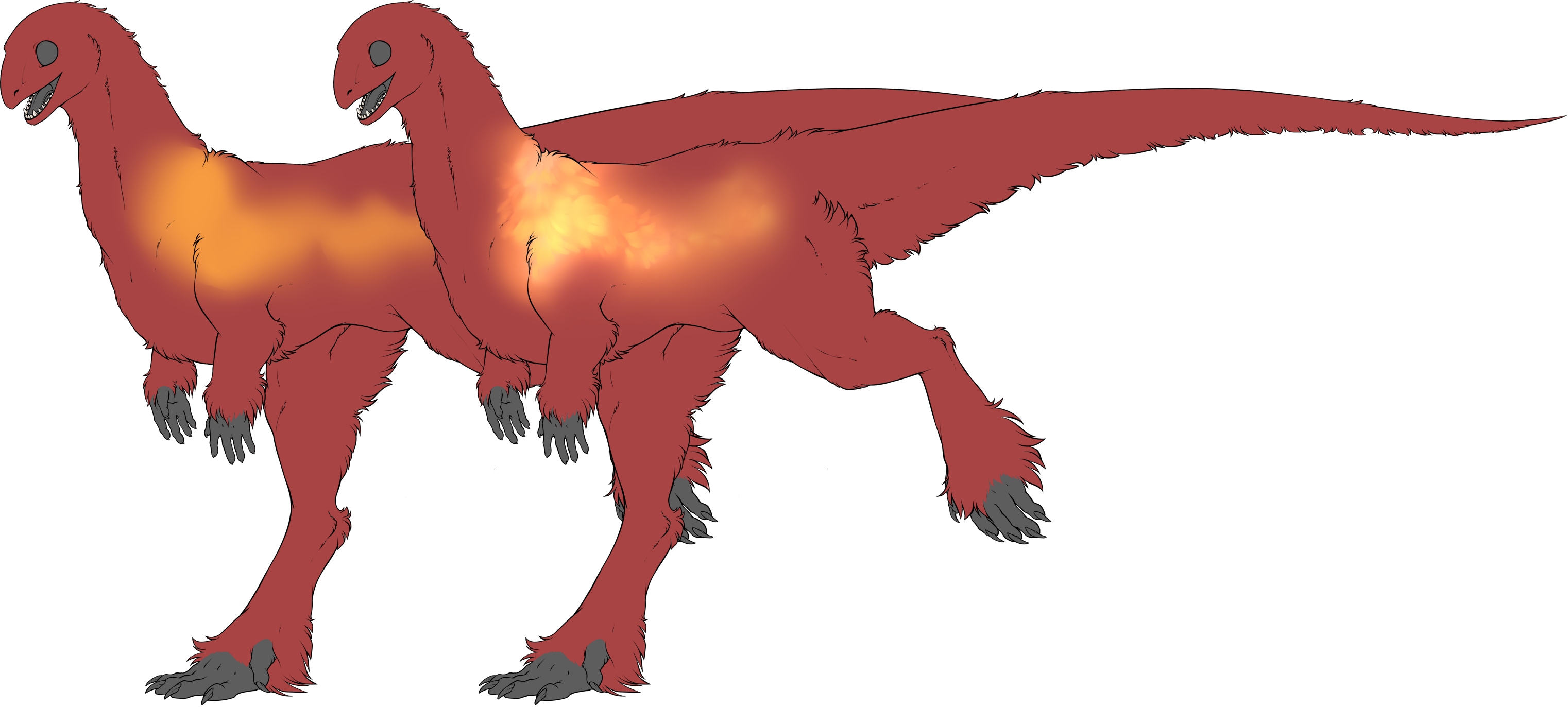
Free Area
Iridescent can create a free area of bright and saturated color. This saturated area should be soft, textured, or blended
edges. This area can be given a shine and sparkling effect.
This free color area should be one solid piece of color, it can't be broken up nor contain holes. It should only be
one color! If shine/shimmering is present, there may be multiple shades of the same color. The exception to this is
when Gradient is present, which can add a second color!
Non-dominant Iridescent can cover up to 25% of the kukuri's body with this shine, and may use any color except for
black, gray or white!
Dominant can cover up to 50% of the kukuri and may be any color, including black, white and gray!
Free area with gradient
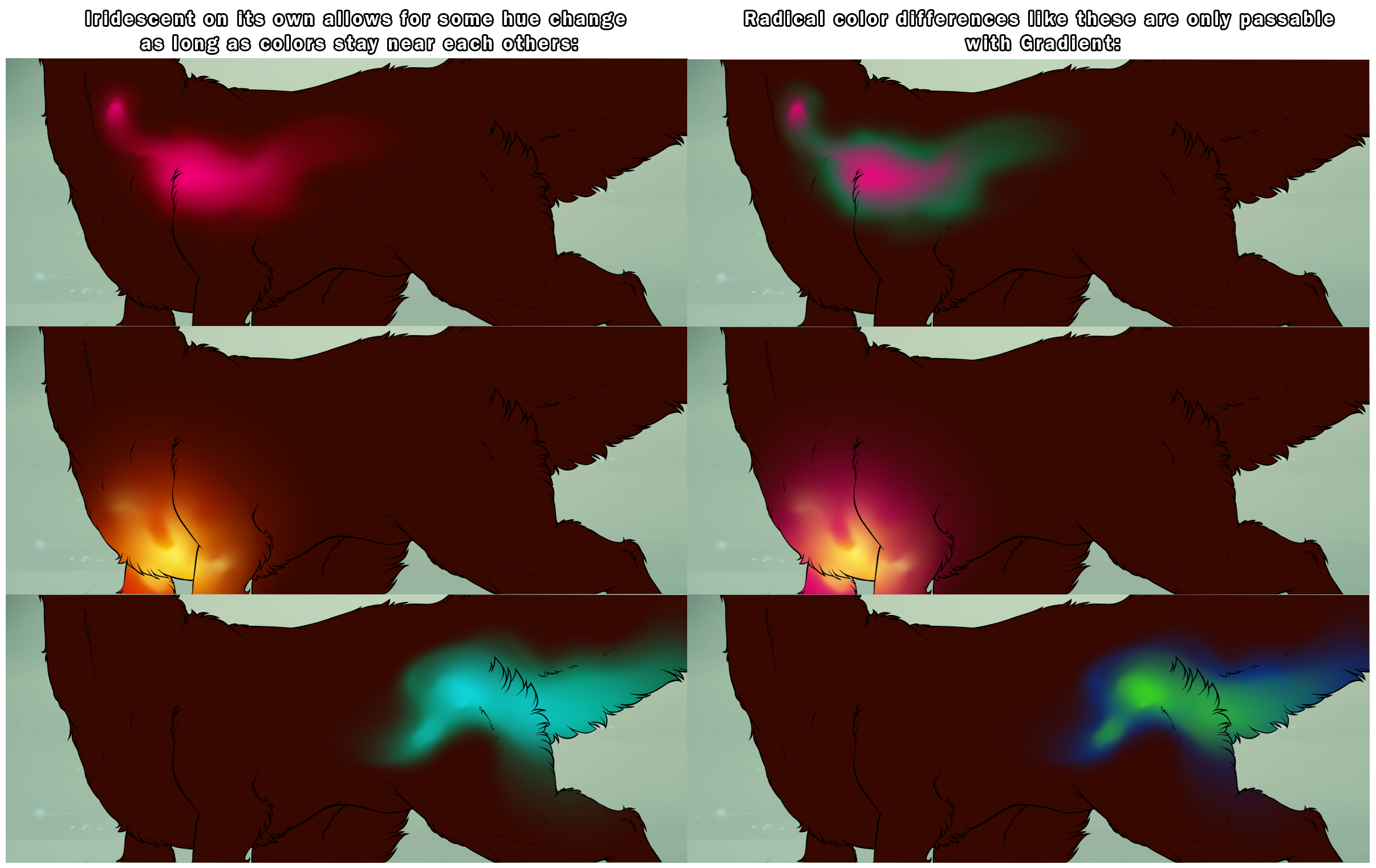
Affect the Basecoat
Markings will show as normal, they are not affected by the base shine and will be a flat color with no added saturation.
Small hue shifts due to layer effects and shading are permissible, but the kukuri's base coat should still remain mostly the same hue, or very close to it. The darkest parts of Iridescent also shouldn't be darker than what the base coat itself allows.
There is a shine limit. Kukuri are furry animals and as such even when they are iridescent, they are not so much that they look metallic. Harsh or high contrast, large sparkles, or hard edges on the shine are not permitted!
You can use a value shift the maximum of what is seen in the first two examples on the right (these can be color picked for reference on various programs). You may use small sparkles or even add fur texturing!
Raven and Pearl coats also have a special set of rules.
Due to the easy nature of either coat to turn illegal colors when saturated, Raven and Pearl can not be saturated. Raven is the most restricted in this way. To the right is the maxiumum a Raven kukuri can be saturated!
Things to Avoid
Iridescent can't effect white or black markings such as Snowflake, Inked, or Soot. In the event that Iridescent appears
with only one of these markings, it can not effect them and should use one of the other options it has available.
Iridescent also can't show large or dashed sparkles, it should be small dot like sparkles that can't be mistaken
as another marking!
Iridescent is not a glowing mark, it can not glow. It also should not be broken into multiple parts or contain
holes without the presence of Break.
When affecting the mouth, Iridecent may make the tongue/gums sparkle, but it should never make the mouth look metallic or
overly shiny.
Iridescent on Prairie Feathers
When using Iridescent to create its own free are of color on Prairies, it can either appear on the body OR affect all the
primary and secondary feathers. The coloring of the Iridescent across the feathers should still stay uniform.
When used this way, Iridescent can not affect covert feathers.
THIS DOES NOT APPLY TO AERIALS OR AQUATICS!

